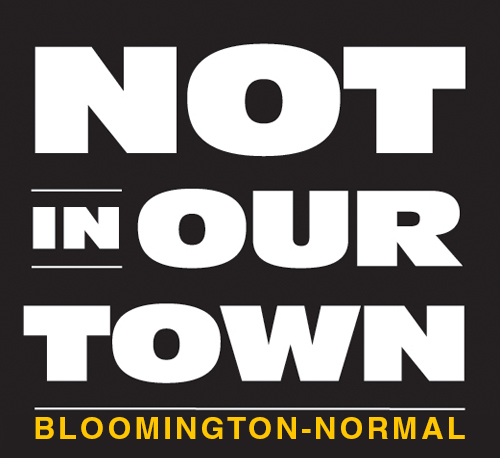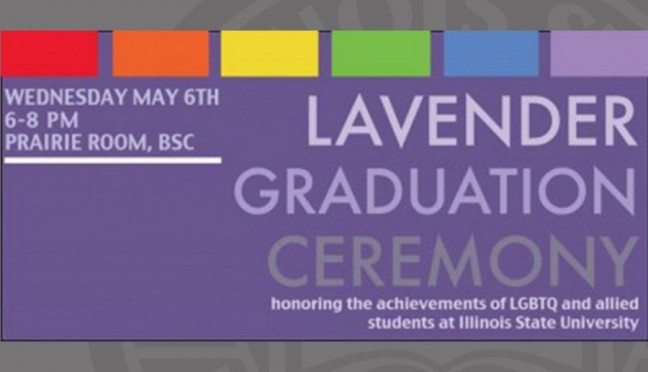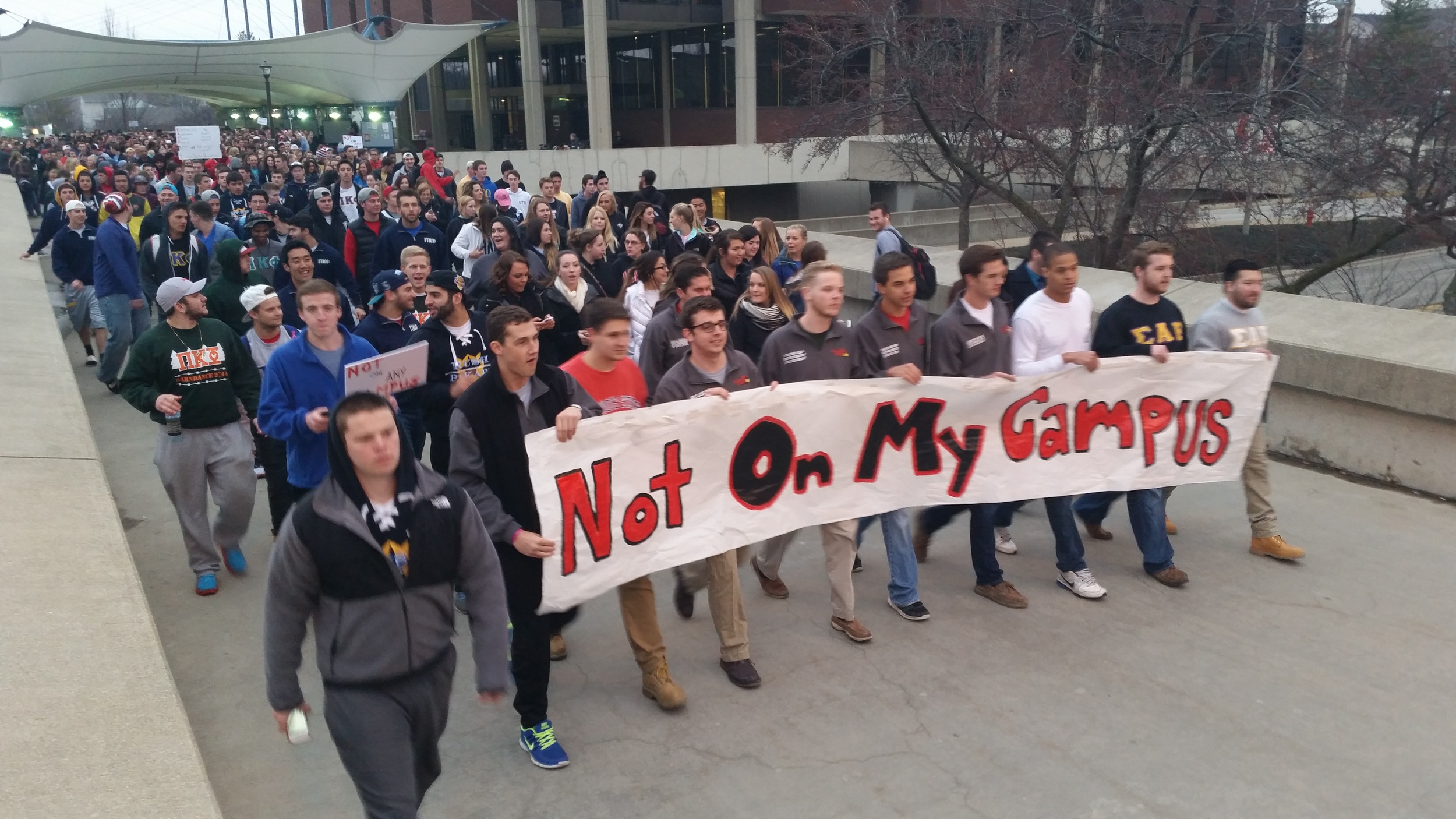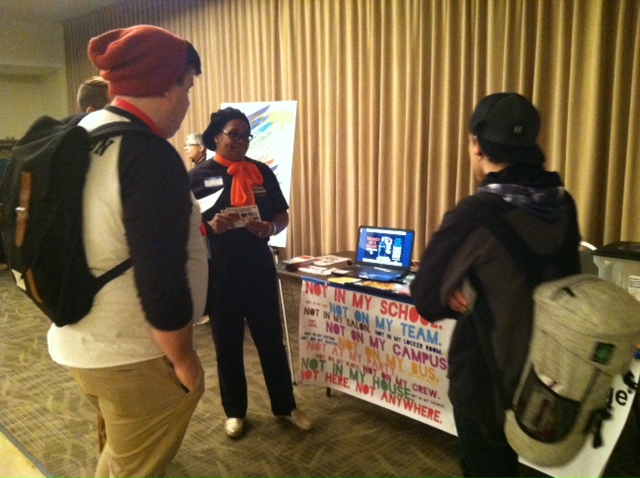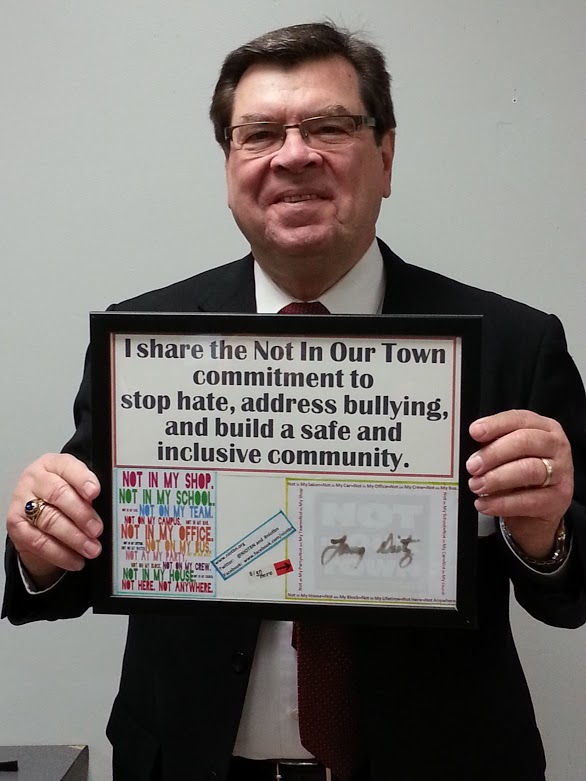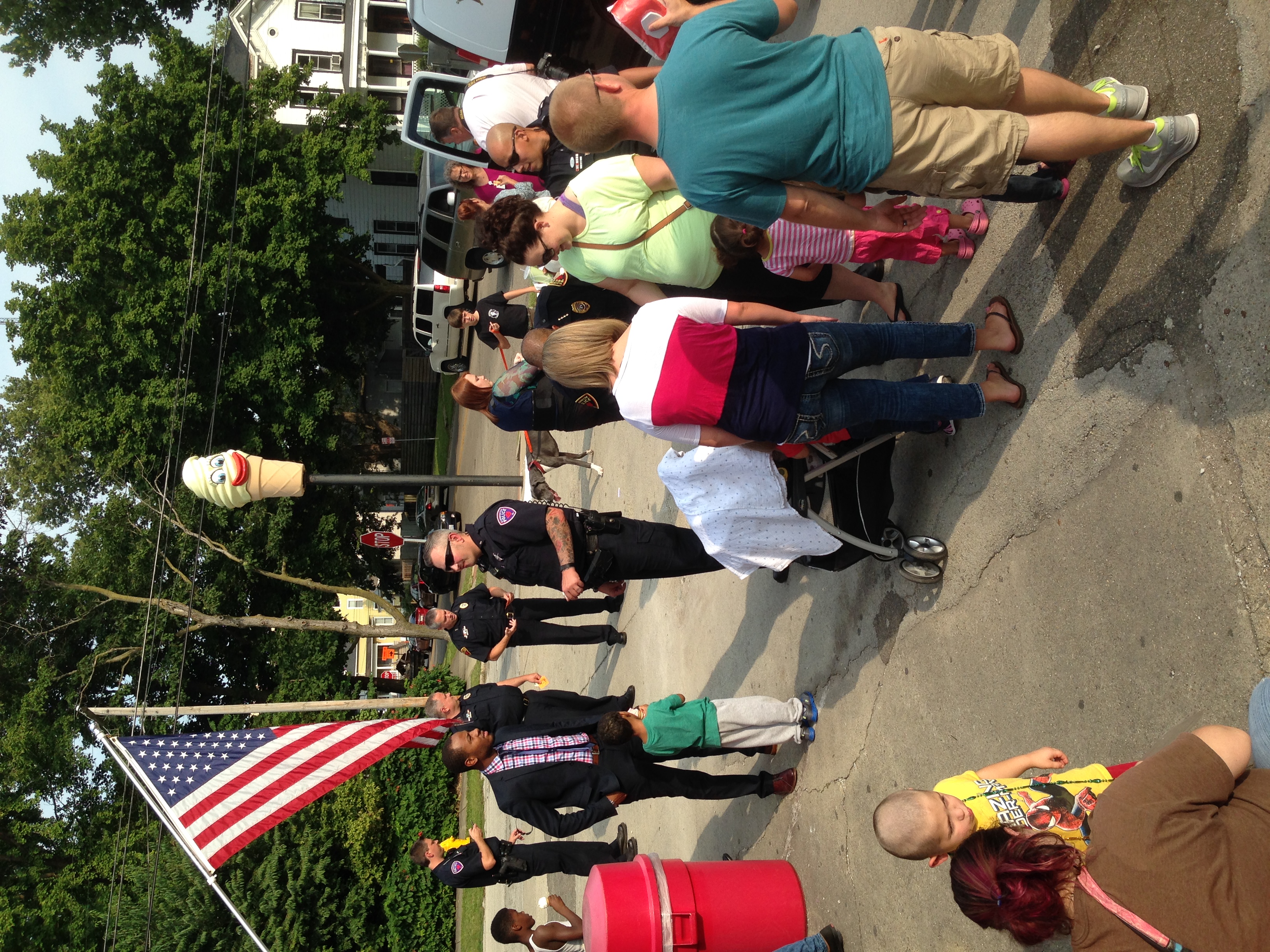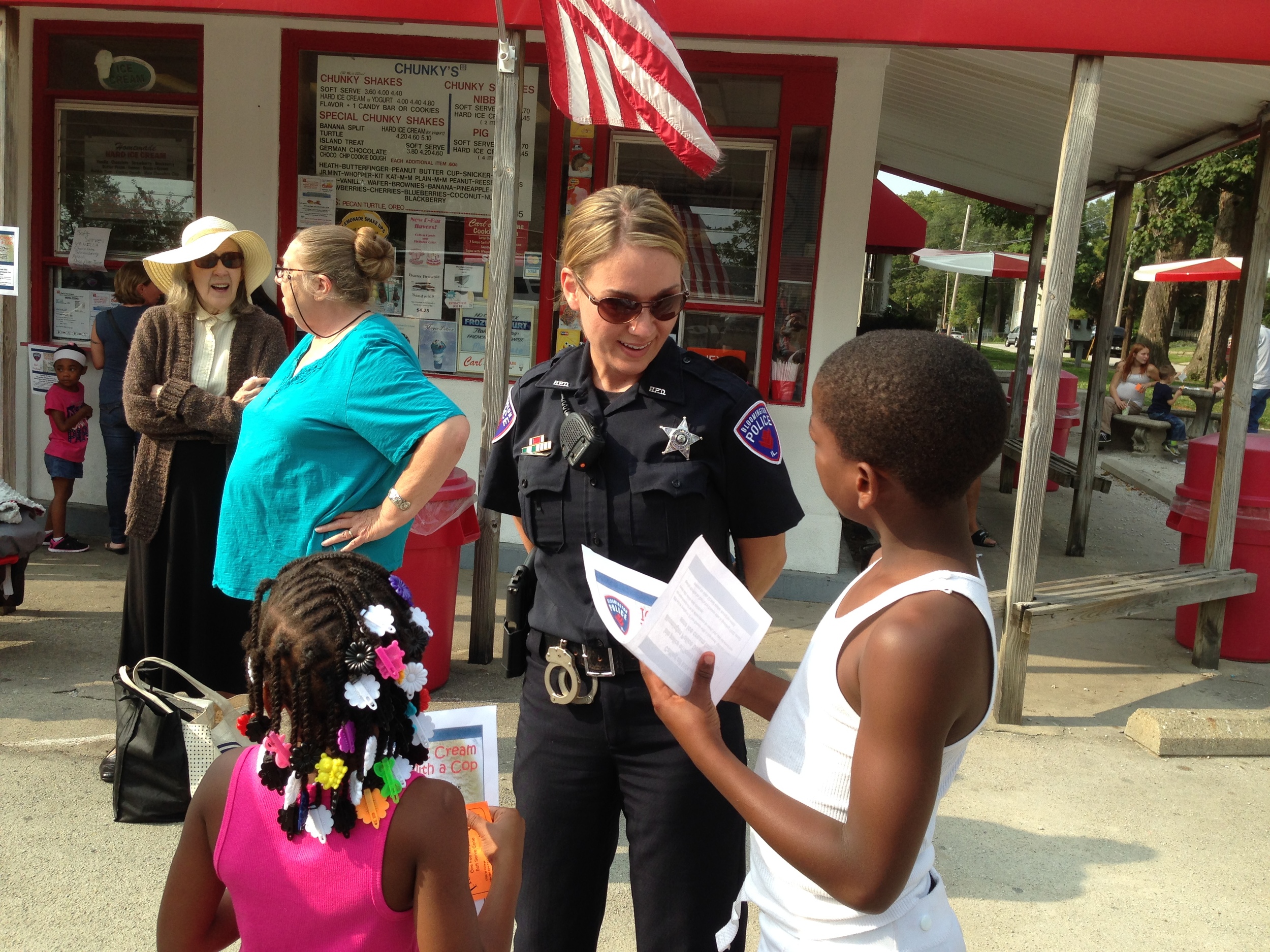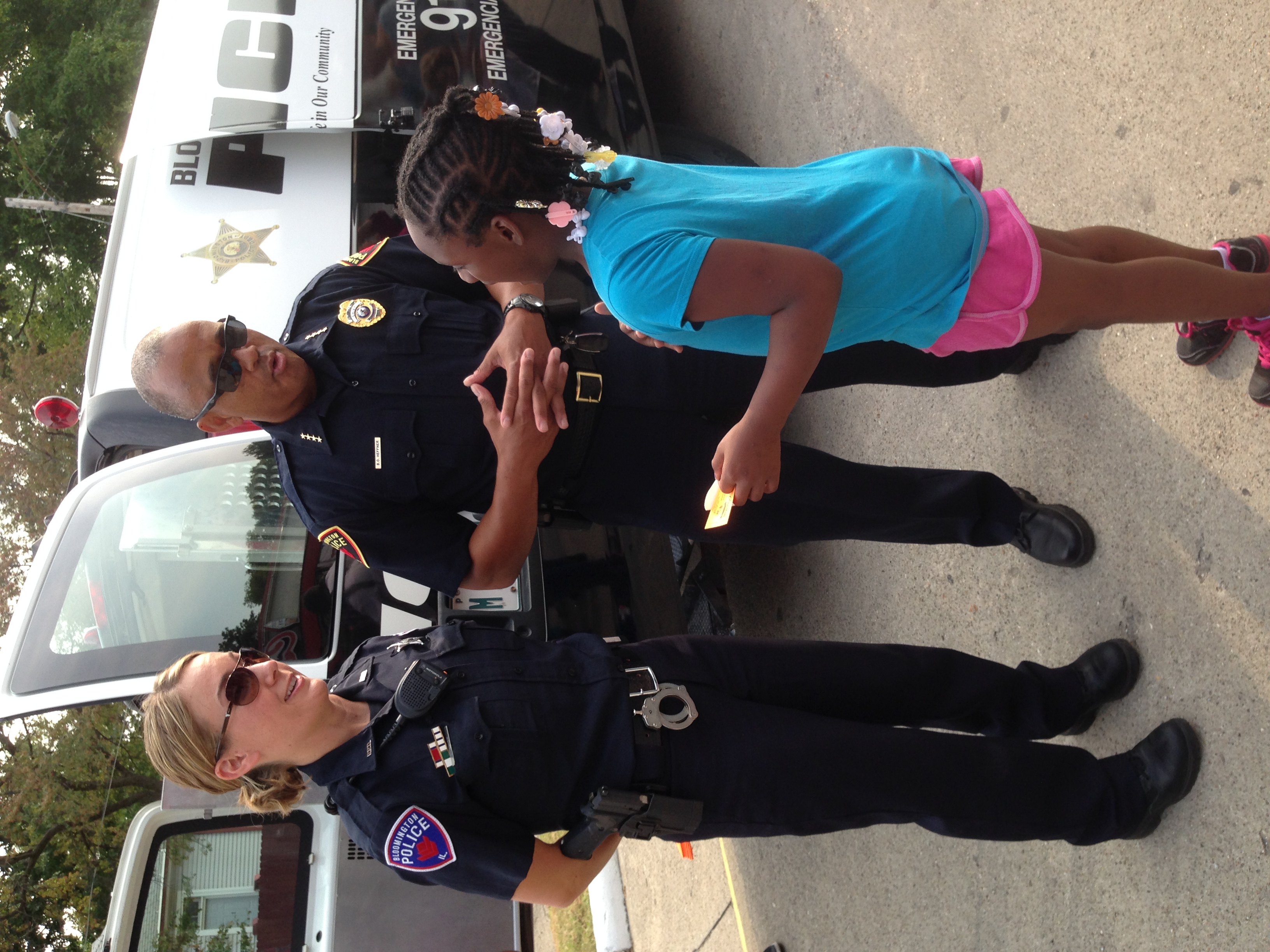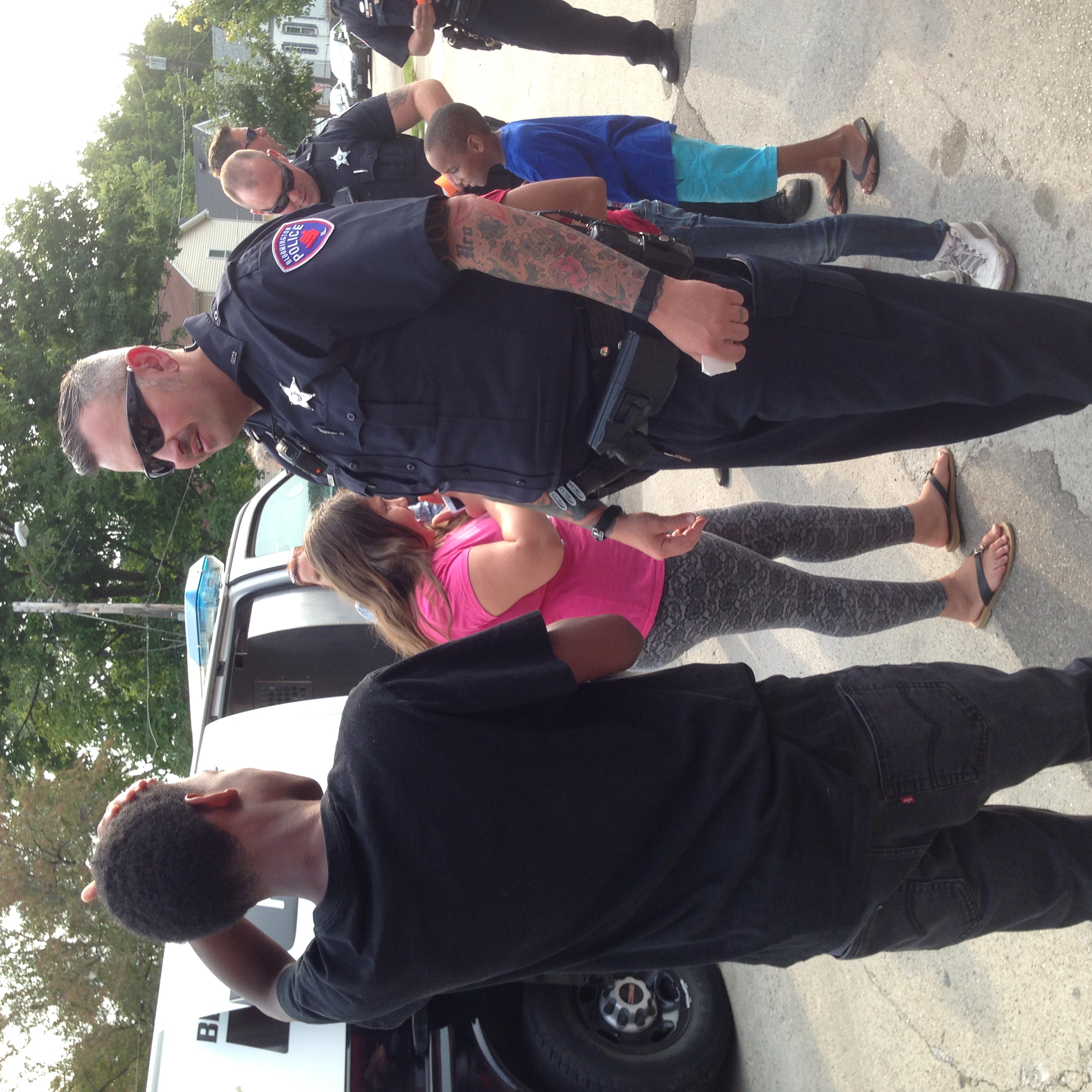More than 40 students at Illinois Wesleyan University staged a silent protest before the first faculty meeting of the semester on Monday, calling for greater attention to inclusiveness and diversity.
A mixed group of students lined both sides of the hallway outside of the meeting room, holding handwritten signs with messages such as, “Stand against ignorance,” “I won't stand for silence,” and “I should feel accepted in the classroom.”
Most of the faculty and staff members who walked down the hall on their way to the meeting — including IWU President Dick Wilson — stopped to read the signs and many made supportive comments to the students.
Among them was history professor Tom Lutze, who said faculty members needed to hear their message.
“There have been instances of racism on campus,” Lutze said. “We need to create an atmosphere in which all of our students feel welcome, especially our students of color. That's what we're all about.”
Although the protest was triggered by an incident just over a week ago when the N-word was found written on a campus sidewalk, organizers said it was about larger issues, such as students experiencing “microaggressions” in classes, when comments are made that are offensive or make students feel singled out or uncomfortable.
Not In Our Town's Angelique Racki applauded the student's proactive but peaceful approach to the slur, noting "the students didn't riot, they didn't damage property, they didn't cause a dramatic pointless scene." "They made their case and their presence known in an important meeting," Racki said. "To me, that's a win."
Christy Cole, a senior in philosophy and French major from Freeport, said, "To me, this goes beyond race" and includes gender, sexual orientation, and religion.
Senior Ashley Spain, an elementary education major from Chicago, said the university puts “a lot of effort into diversity” but more needs to be done.
“Diversity is in our mission statement at IWU,” said Kitty White, a senior in sociology from Chicago. “If it's in your mission statement, it has to be your mission.”
Reading each sign in the hallway, Wilson told the students, “It takes courage to do this, and I'm proud of you.”
The students asked for and received permission for two students to speak to the meeting on behalf of the others. The students were greeted with applause as they entered the meeting room.
The first speaker, Emani Johnson, a sophomore in sociology from Chicago, said, the students were not there to discredit the school, but “there's always room for improvement.”
She said there can be no improvement without faculty involvement.
“We're here to recruit you as allies,” Johnson said.
The second speaker, senior Catherine Carini, a music major from Chicago, told faculty members, “We look to you to start the conversation” about incidents such as the word written by he fountain and to be as loud about social justice as they are about classroom subject matter.
Carini is involved in “Engaging Diversity,” a three-day program for white, incoming first-year students that began five years ago. Participation grew to 35 students this year.
Cole said students would be back at a later time with more specific suggestions of what the university could do.
Among ideas some students are contemplating is a semester-long general studies course on diversity issues, rather than just the pre-orientation “Engaging Diversity” program.
--
Angelique Racki,
